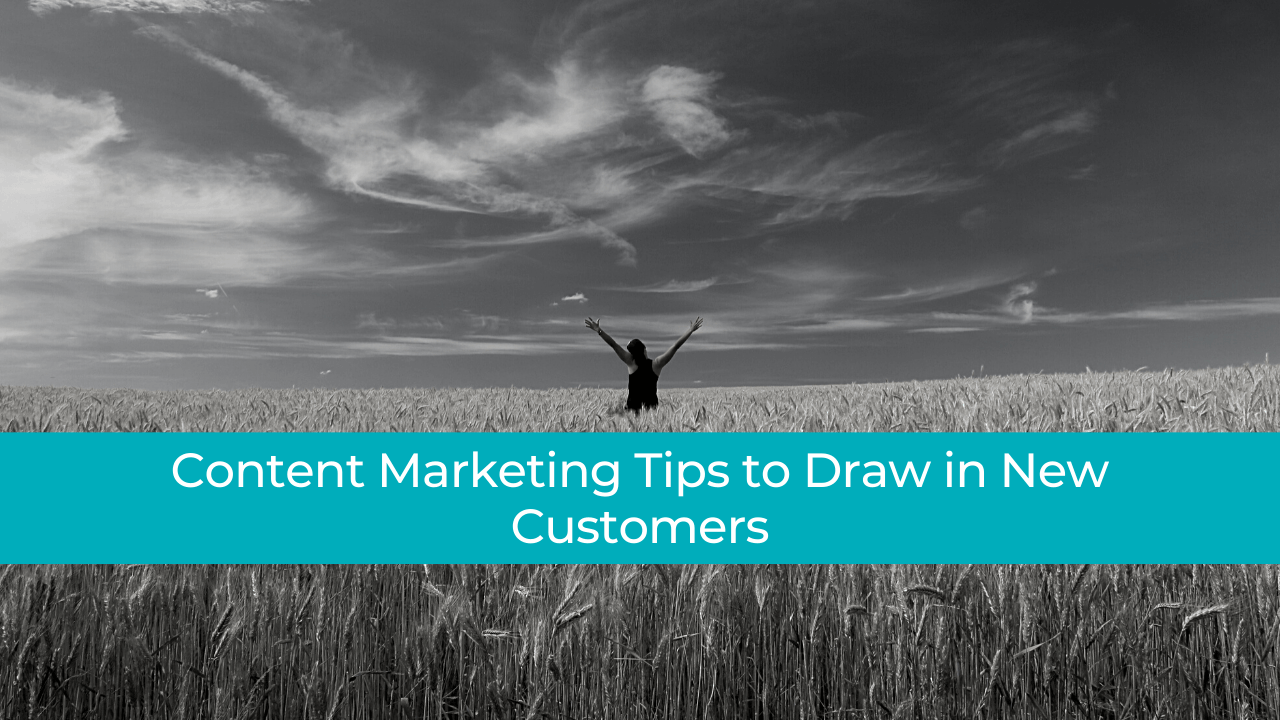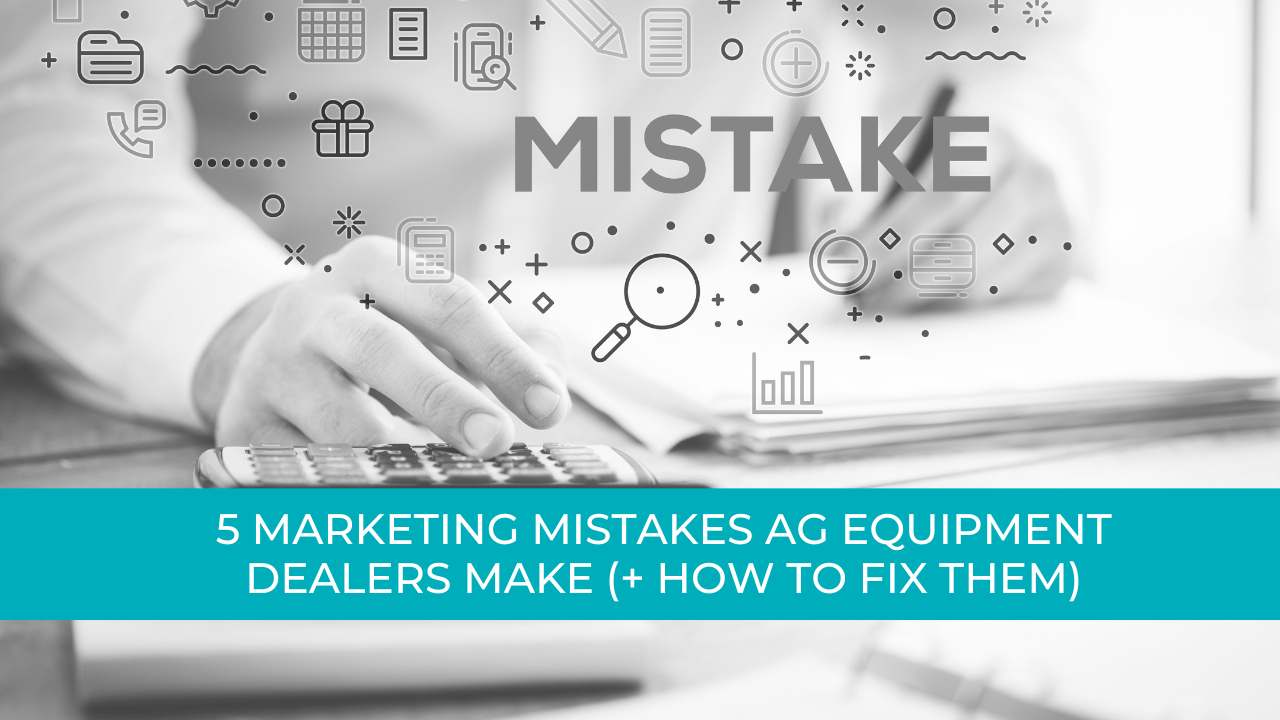Agtivation Blog
What's New In The Digital Ag World
Content Marketing Tips to Draw in New Customers
Great content will not only push traffic to your website, but also help convert them to loyal, paying clients. Having a clearly defined content marketing strategy will only help this traffic grow with each new piece of content you upload.

Content marketing has been around since the dawn of the internet and if it’s good enough for John Deere, it’s good enough for us too!
According to the gurus that are
The Content Marketing Institute, content marketing is:
"...a strategic marketing approach focused on creating and distributing valuable, relevant, and consistent content to attract and retain a clearly defined audience — and, ultimately, to drive profitable customer action."
What does that actually mean though?
Content marketing can include the likes of:
- Blogging
- Emails
- Social media posts
- Video
- Ebooks
- Infographics
- Template & Checklist Downloads
- Longform Content (like blogs, but at least 5,000 words long)
- Case Studies
- White Papers
- Brochures
- Guides
With so many different types of content to choose from, it can be difficult to decide what’s best for your company to use to communicate with your audience effectively.
Great content will not only push traffic to your website, but also help convert them to loyal, paying clients. Having a clearly defined content marketing strategy will only help this traffic grow with each new piece of content you upload.
Here are some ag-focused tips on how you can use content marketing to draw in new, loyal customers into your business.
Create relevant content for your ideal customer
You don’t want to attract just any old traffic to your website. You want to attract qualified traffic that will convert to paying customers.
There isn’t any point in attracting users who don’t belong in the agricultural industry, as they won’t have any real reason to do business with you. So, with this in mind, you need to create content that is relative to the agricultural industry.
If you haven’t already, take the time to research your specific area of the ag market and see what sort of content your audience is looking for.
Go to where they’re hanging out online - are there specific forums or groups they join? Read what they’re talking about - you’ll find they stick to the same topics/ask the same questions repeatedly.
This is what you need to focus your content on.
Write/record/post content that will answer your visitors questions. This will help you get known as the go-to expert for your specific talents.
Listening to your audience helps you see what is important. Try talking with previous/current clients, figure out what content they’d like to see most.
If your ideal customer is local - make sure to write about local events and local topics. It’ll help connect with your audience and promote you as a local solution to their needs.
Use Google-friendly keywords and phrases
Search engines are there to help your audience find the content they want to consume. The search engines want to please their users and get them to the pages they were looking for. They do this by matching keywords and phrases that the user uses in their searches.
When you use keywords relevant to the agricultural industry in your content then Google is going to reward you and push your content closer to the top to please their users.
Long-tail key phrases are even better. By using phrases that your audience would use in their searches Google will be able to match your posts with what they’re searching for a whole lot easier.
Now, don't stuff your content full of keywords, Google won’t like it, but you should definitely include them naturally in your content. If you’re creating genuinely helpful, insightful content, you’ll probably hit a few of those essential keywords organically.
The best places to use keywords and phrases are in your:
- URL
- Main title
- H1/H2/H3 tags
- Your first paragraph
- Subheadings
- The alt text for images
- Meta titles and descriptions
Using relevant keywords and phrases in your content is great - but only when it makes sense.
Don’t just randomly put keywords in places because you want Google to push your website to the top of the search results. Not only will Google pick up on this (and penalize your site for it) but your random use of keywords will also confuse your audience.
Make your content easy to find
Website wise, you want your visitors to be able to find what they’re looking for easily. Make sure your navigation is easy to follow.
Organization is key to user friendly content. Make it difficult for your visitors to find and it’ll only create a barrier between you.
For example, if you have a blog and you upload a blog post every week, you’re going to have a lot of posts on your site.
If you don’t have these posts organized with tags, categories and sections, your visitor is going to struggle to find the content they need.
Using tags and categories for your blogs will also help improve your rank on Google.
Social media wise, if you’re promoting certain content, make sure you’re linking to that specific content.
Offering a one-of-a-kind-limited-edition deal? Link to a specific landing page promoting it - for the love of ag, do not link to your home page.
The end goal of all content marketing is to convert visitors into leads, then customers. The easier you make it to convert (submitting their contact details, buying a specific item, registering for an event), the quicker it will happen.
Create content that is shareable
To be effective, content needs to be shareable. We’ve all heard of stories and seen videos that go viral - getting the companies that created them an amazing amount of exposure.
Ok, so every piece of content you create isn’t going to go viral, but you should still create everything with shareability in mind.
Content that people can’t wait to share with their friends, family, colleagues and customers is the most effective content that you can have.
But, how do you make content shareable?
It all comes down on whether or not the reader (or viewer for video content) gains anything from sharing your content.
Think about the posts you personally share online.
What does that content do that makes you want to share them?
It most likely falls under one of these categories:
- It’s funny or entertaining
- It’s informative or helpful
- It disproves a common theory
- It shows you care, whether it’s for your community, your industry, or something else
- It’s promoting an important event
- It’s an innovative study/tech advancement/a game changer
Your most effective content will generally fall under one of these categories too. There’s one incredibly common content theme missing: straight sales pieces.
Keep your sales content to a minimum on social media, your blog and your email marketing.
It may sound counterintuitive, but modern content marketing focuses on promoting your company as an expert guide in your niche, building a relationship with your audience - then selling to them.
A general rule of thumb is to promote one piece of sales-focused content for every seven non-sales pieces.
We hope you found these ag content marketing tips useful. Our industry is so relationship driven in person, content marketing is the perfect way to extend this approach online and resonate with your audience.
Here at Agtivation, we love helping ag businesses thrive online. If you’d like to stop the feast and famine sales cycle - and promote your business even when you’re busy in the fields
get in touch with our team today.














